Last Chance to Catch NYC's Holiday Notalgia Train
We met the voices of the NYC subway on our nostalgia ride this weekend!

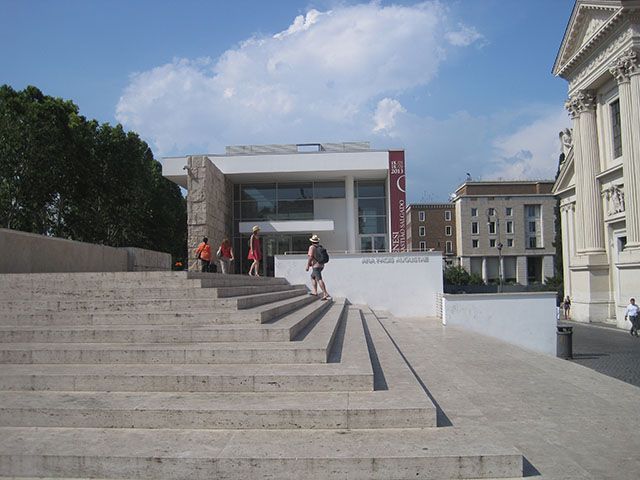
All photos by Ellen Ryan
One thing you learn quickly in Rome is that there is not a lot of contemporary architecture in the historic center. Newer high profile works tend to be clumped at the edges, like Renzo Piano’s Parco della Musica and Zaha Hadid’s MAXXI Museum. So it’s notable when a bold new work, like the Ara Pacis Museum, muscles its way into the historic core.
The Ara Pacis, or “altar of peace” is a remarkable artifact. Lost for over a thousand years, it was discovered piece by piece, over centuries, and involved everyone from archaeologists to members of nobility and even Mussolini himself.
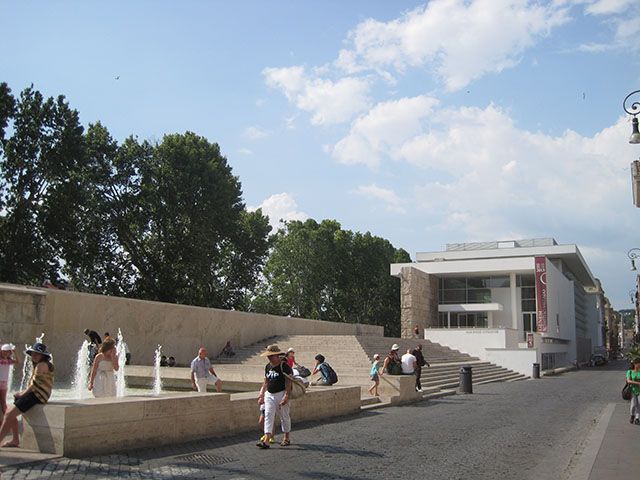

Richard Meier’s work was not unknown in the Eternal City when he was selected to design the new home for the Ara Pacis. He had been commissioned by the Archdiocese of Rome to build the Jubilee Church in 2000, a building in a peripheral housing district. Following this success, Meier was appointed unilaterally by Rome’s then-mayor to replace the decayed 1938 Ara Pacis pavilion and create its new home in a prominent, central location between the tomb of Augustus and the banks of the Tiber River.
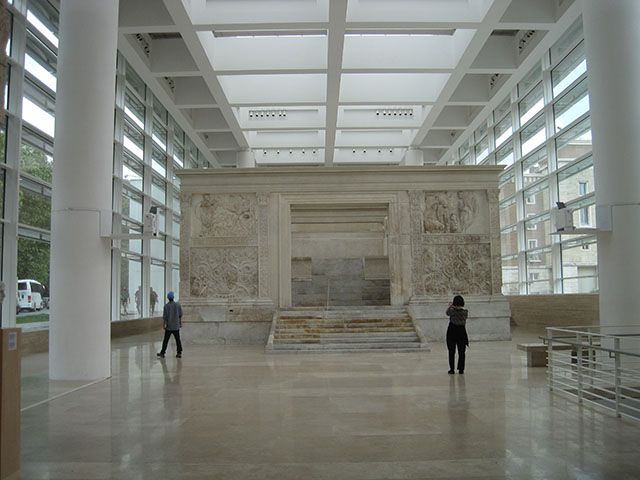
The Ara Pacis was commissioned by the Roman Senate to honor Emperor Augustus and to celebrate a time of stability and prosperity in Rome–peace and prosperity that was established through successful military campaigns in Spain and Gaul. The altar, fashioned from Luna marble, includes carved vignettes of Augustus and his family, among other notables, making offerings to the gods and was to be used for ritual animal sacrifice.
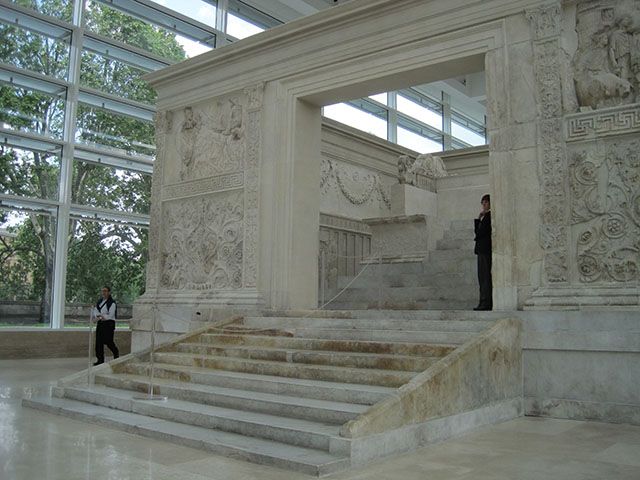
Completed in 2006, the new museum has been controversial. Excessive building costs and a protracted construction schedule spurred criticism initially, but it is the overwhelming scale and ungracious relationship with the neighboring churches that has earned the Ara Pacis Museum the most enduring resentment locally.
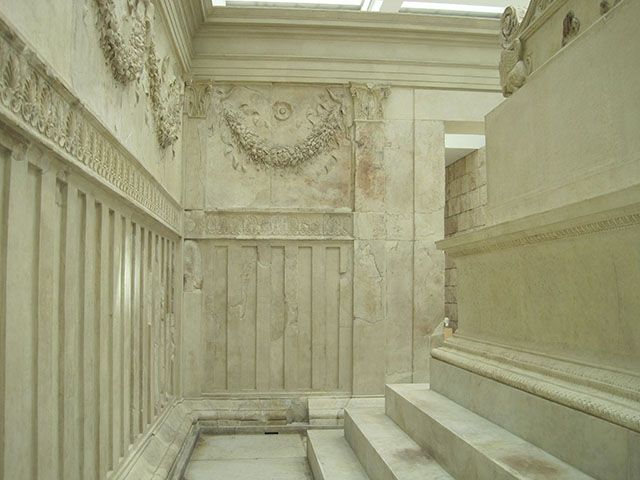

However, while there is no mistaking its signature “starchitect” look on the exterior, the Meier building works best inside, where it showcases the altar’s grandeur and provides a strong visual connection to the Augustus mausoleum to the east and the Tiber to the west. The fine materials, thoughtful lighting and sound-proofing give the altar the prominence and visual focus it richly deserves. The perfect setting to contemplate the aspirations of a distant empire.
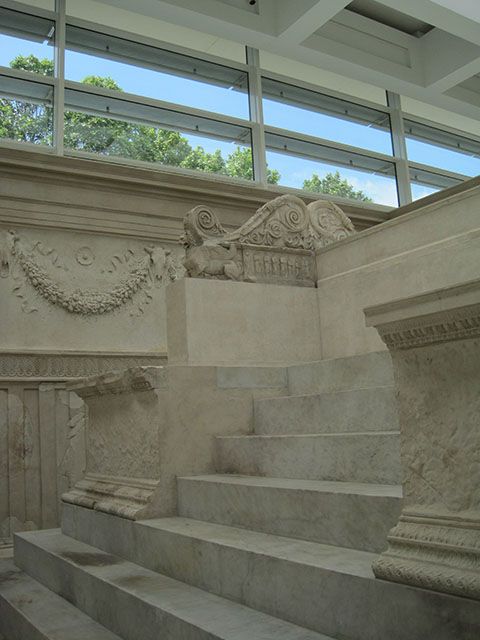
Visit the excellent bookstore within the museum and afterward, wander north to the Fascist era-built Piazza Augustus Imperatore to enjoy dining al fresco.
Get in touch with the author @ellenville8.
Subscribe to our newsletter